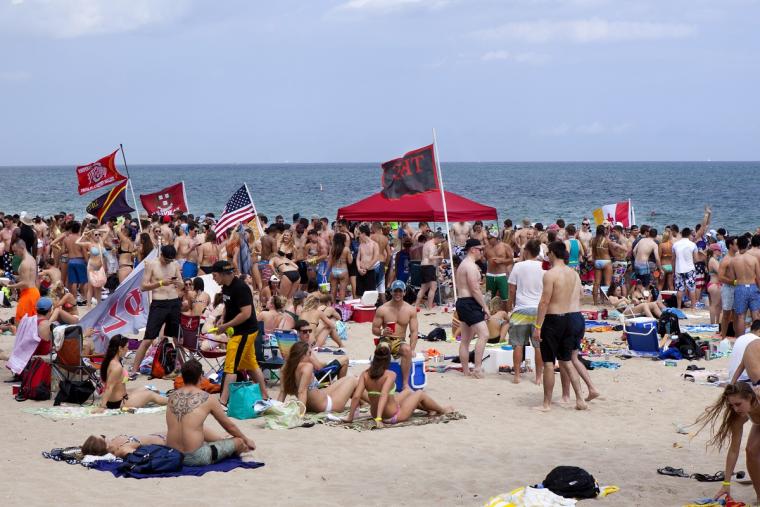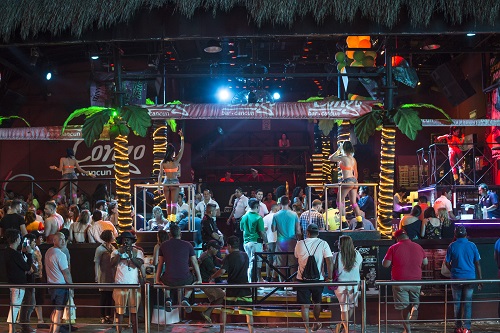
It’s the true definition of a dark horse. The most recent (and most unexpected) savior of economic impact, in the face of all kinds of uncertainty, was spring break.
That’s right – the (some say) unholy alliance of college students, alcohol and tourism blasted hotel performance through the roof for March, leading many to reconsider its importance in the hosting equation.
Epsilon notes, “Consider this a down payment on what the travel industry hopes is a yearlong rebound as restrictions fall away. The World Travel & Tourism Council forecasts that U.S. travel and tourism could reach pre-pandemic levels in 2022, and for tourism-dependent regions that have suffered through a decline during the pandemic, that's both a welcome prospect and an invitation to roll out the red carpet.”
Colleges, many of which had cancelled spring break in the face of the pandemic, reinstituted it this year – and the results were big. Bigger than big, in fact.
According to Hotel Management, the country’s occupancy and RevPAR levels in March were the highest since last July. On a nominal basis, the country’s ADR level was the highest for any month on record. The stats, say HM, were as follows:
March (percentage change from March 2019):
- Occupancy: 64 percent (-6.2 percent)
- Average daily rate: $146.61 (+10.9 percent)
- Revenue per available room: $93.82 (+4 percent)
 According to Smith Travel Research as quoted by HM, “among the top 25 markets, Tampa, Florida, reported the highest occupancy level (84.7 percent), which was still down 3.6 percent from the market’s 2019 benchmark. None of the top 25 markets saw an occupancy increase over 2019.
According to Smith Travel Research as quoted by HM, “among the top 25 markets, Tampa, Florida, reported the highest occupancy level (84.7 percent), which was still down 3.6 percent from the market’s 2019 benchmark. None of the top 25 markets saw an occupancy increase over 2019.
But, honestly – did anyone really expect them to? Well…Oregon did. According to a March (pre-travel) report by the Oregon Office of Economic Analysis, “It’s the first [spring break] in a couple of years that might actually feel like spring break. COVID cases and hospitalizations are low, masks are off if you want, and household finances remain strong. There is definitely some pent-up demand for travel, entertainment and fun.”
Additionally, the report noted, there was plenty of data on which to base that assumption. The traffic counts from ODOT showed that driving was fully back to where it was pre-pandemic. Second, the latest passenger counts from airports in Oregon, showed air travel to the state’s regional airports was essentially fully recovered, whereas passenger counts at the state’s largest airport, PDX, remained about 20 to 30 percent lower. This pattern, the report noted, “was likely impacted by the fact that leisure travel has rebounded strongly, but business travel remains weak.”
And then there was the hotel news. As reported weekly by Travel Oregon, hotel occupancy outside of the Portland area was above pre-pandemic figures.
And it wasn’t just people leaving one state and heading for beaches in, say, Florida, California or Hawaii. It was hotels in ski destinations that also were reporting enormous bumps. According to Summit Daily, which serves the ski areas of Colorado, hotels were seeing more reservations than ever:
“March nights on the books exceeded 2021 by 34 percent and surpassed 2019 by 13 percent, with visitation peaking the week of March 12-19,” Breckenridge Tourism Office spokesperson Lauren Swanson said. “We are anticipating a lively spring break in Breckenridge and recommend that residents plan for increased congestion by using public transportation, anticipating traffic and practicing patience.”
But what if a destination is not a traditional spring break hot spot? Epsilon notes that it’s time to retool and rethink:
“In traditional spring break hot spots like Miami, Vail and Panama City Beach, capitalizing on that comeback may be as simple as announcing that their towns are open once again for business. However, other regions must work harder to ensure that they're on travelers' radar. For example, in Florida's Brevard County, the Space Coast Office of Tourism is spending $1.1 million this spring to lure travelers—nearly double the amount of last year's effort. The Space Coast is home to the Kennedy Space Center, Cape Canaveral Space Force Station, and 72 miles of coastline. Part of its pitch focuses on getting visitors to nearby Orlando to fit in a trip to Florida's east coast.”
Aggregation of various attractions – beaches, museums, wineries, an arts district and so on – can create a more appealing vision and attract audiences with various focuses, says Epsilon.
Spring break has long been seen as a boon for towns. An article in Free Enterprise notes that John Laurie, a grad student at the University of New Orleans, went so far as to write his dissertation on the phenomenon. In “Spring Break: The Economic, Socio-Political, and Public Governance Impacts of College Students on Spring Break Host Locations,” Laurie notes that the economic impact of the influx of students cannot be downplayed, with young people pumping some $1 billion each year into Texas and Florida’s economies alone.
Of course, whether destinations will reconsider the role of spring break in the hosting equation...well, that's an open question. Some, like Panama City Beach, retooled their images to be more family-friendly and sports-focused, rather than concentrating on the party crowd. Others continued to welcome the spring breakers. But COVID was the bracket-buster nobody anticipated, and might have resulted in some destinations feeling more hospitable to a big source of income in hotels, restaurants and, yes, bars, during a slow season.
Something else we’re likely to see boosted is spring break income stemming from sports teams that traveled to compete during that time. Youth events – baseball, softball, lacrosse, swimming, spring soccer, beach volleyball and others, make up a huge portion of the travel economy during the spring period overall.
And there was no doubt the market was hungry for them last year. GSL Tournaments, for example held 8U-14U baseball tournaments in 2021 from January through June, including a heavy concentration from March through the end of April. In Richmond, Virginia, the Jefferson Cup had soccer tournaments throughout March. And MyHockeyTournaments had a list of ice hockey events nationwide stretching from fall to spring. The search engine, High School Tournaments, also showed an enormous array of tournaments coast to coast in all sports. This year, even more tournaments were up and running, in markets nationwide.
And, says Epsilon, spring breakers who suffer from pandemic fatigue were primed and ready to spend:
“An Expedia survey shows that travelers in 2022 aren't just traveling again but aiming to make up for the lost time by splurging on especially epic adventures. That's good news for the tourism industry but also means there's pressure for regional marketers to show that their areas can deliver the goods on a grand scale.”
There’s no doubt that spring break was a welcome respite for destinations this past March. However, whether or not college students and their revelry will be welcomed every year with the same enthusiasm – well, we’ll just have to see.
